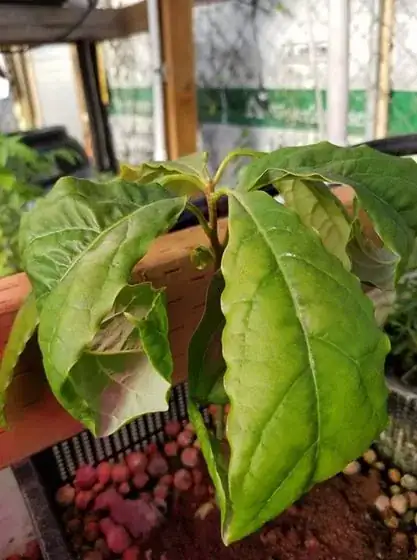This plant needs some chemistry to be able to make its food/energy via photosynthesis. It is a dying and vulnerable plant right now. If there is a disease or insect problem it will be but secondary. This plant needs some chemistry. Others say nutrients...chemistry. Everything is chemistry. Healthy plants have to have chemistry to be healthy and vigorous and strong enough to resist damage by disease or insects. No micro and macro 'nutrients' or chemistry added is your problem. Easy to get confused with the mass of information over the internet and all the opinions of those that want to 'get back to nature'! Aquaponics can be a cool recycling of some chemistry. One needs to know the level of all chemistry before adding more because although adding none is a slow death adding a little bit too much is a quick death.
If you aren't adding micro or macro 'nutrients' or chemistry to that water, this plant has no way to get Nitrogen, Phosphorus, Potassium, Calcium, Molybdenum, Boron, Iron, Silica, Sulfur, Manganese, Copper, Chlorine, Zinc!??
No plant could ever survive without these chemicals. All plants are different needing different amounts, different pH that greatly affects the chemistry. All plants we want to grow are dependent upon us completely.
Plants make their own food. Photosynthesis requires all these chemicals in very very small amounts, without these chemicals plants start looking like yours. Your plant is unable to make its own food, thus it has no energy to maintain life and it is slowly dying.
You are growing in water? Hydroponics even aquaponics requires additional chemistry added knowledgeably for any kind of success. Why the no 'dosing'? The use of that word tells me you might have chemistry misinformation? Food we eat is chemistry. Air we breathe is chemistry. We are individual bags of chemistry.
No matter the medium of our gardens nor what type of crop we humans desire everything we touch will always be artificial and wholly dependent on us humans...our understanding of the web of life all those sciences. The more the gardener understands about the science nature has perfected, the better to reduce artificial input. Food to eat.
